The AMD Radeon RX 590 Review, feat. XFX & PowerColor: Polaris Returns (Again)
by Nate Oh on November 15, 2018 9:00 AM ESTBattlefield 1 (DX11)
Battlefield 1 returns from the 2017 benchmark suite, the 2017 benchmark suite with a bang as DICE brought gamers the long-awaited AAA World War 1 shooter a little over a year ago. With detailed maps, environmental effects, and pacy combat, Battlefield 1 provides a generally well-optimized yet demanding graphics workload. The next Battlefield game from DICE, Battlefield V, completes the nostalgia circuit with a return to World War 2, but more importantly for us, is one of the flagship titles for GeForce RTX real time ray tracing, although at this time it isn't ready.
We use the Ultra preset is used with no alterations. As these benchmarks are from single player mode, our rule of thumb with multiplayer performance still applies: multiplayer framerates generally dip to half our single player framerates. Battlefield 1 also supports HDR (HDR10, Dolby Vision).
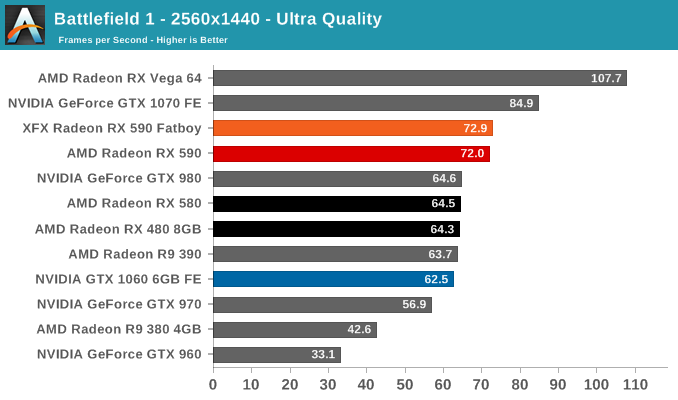
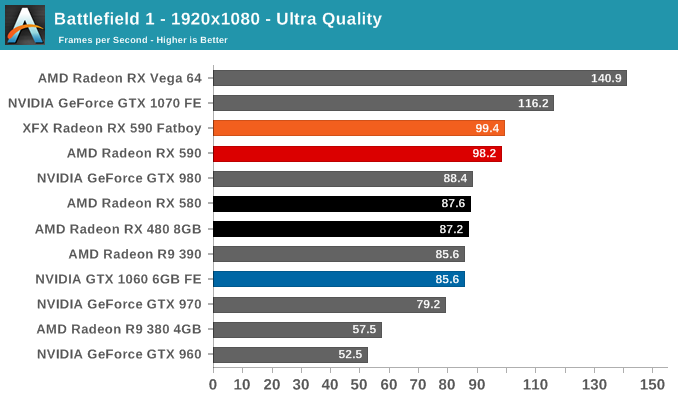
Battlefield 1 has made the rounds for some time, and after the optimizations over the years both manufacturers generally enjoy solid performance across the board. Here, the RX 590 clockspeeds firmly place it in the slot below the GTX 1070. The difference isn't world-changing, but because multiplayer framerates are often about half of singleplayer, the boost could have value for multiplayer fiends.
Here, the GTX 1060 6GB Founders Edition already starts off behind the original reference RX 480 8GB, and the higher clocks permit the RX 590 to make up ground on the GTX 1070 Founders Edition. For the RX 590, this level of performance is where it wants to be - creeping up on the GTX 1070 and firmly faster than its Polaris predecessors, the GTX 1060 6GB, and older-generation enthusiast-grade cards like the GTX 980. In practice, the competition will be factory-overclocked GTX 1060 6GB cards rather than the reference Founders Edition, and so there will be less room to maneuver.
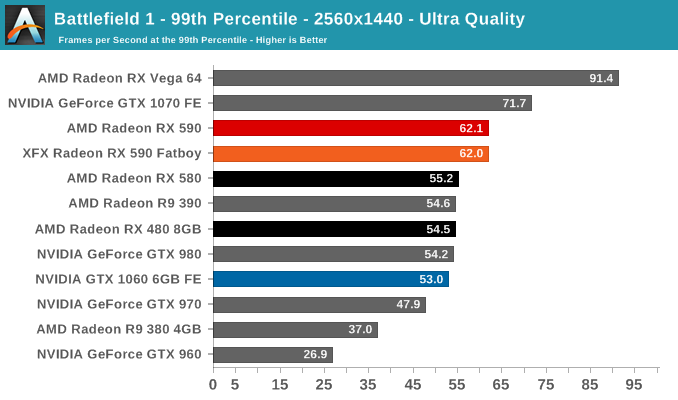
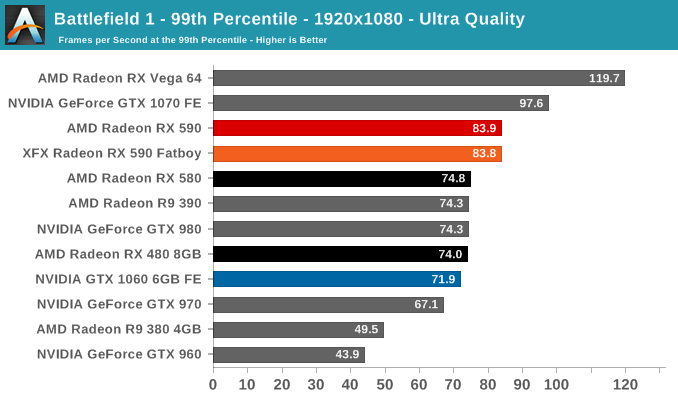
The trend continues for 99th percentiles, which are arguably more important than averages when it comes to fast-paced shooters.


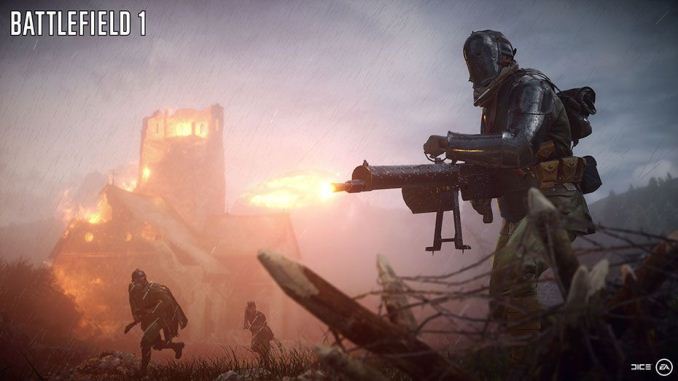








136 Comments
View All Comments
Opencg - Thursday, November 15, 2018 - link
Its just a gap filler. It will help them make money from people wanting to get good performance at that price but... we're still waiting for the serious contenders. Vega refresh will be a little more toward the high end but... navi is where amd could potentially shift the market. RTX means you pay more for less performance outside rtx games. Navi is the opposite you pay less and get more. We need navi to function well and I believe amd can do it.neblogai - Thursday, November 15, 2018 - link
Is is not a gap filler. It is only there, because overproduction of P20 needs to be sold out first. Naturally- P30 should be a replacement of P20, at same price, with minimal investment by MAD or partners.eva02langley - Thursday, November 15, 2018 - link
Polaris is selling well, Vega, not so much beside mining. In Canada, the price are still having a huge price tag because the supply is just so low.Allan_Hundeboll - Thursday, November 15, 2018 - link
I am surprised a boost frequency increase of 15% nets 12% overall performance. Maybe Polaris isn't as starved for memory bandwidth, as people seem to think. Or AMD made other improvements besides the increased frequency...?mapesdhs - Thursday, November 15, 2018 - link
Frequency increases rarely produce linear performance gains, not when there are so many other aspects of a system that impact what's happening (main CPU, API, game engine, etc.)Allan_Hundeboll - Thursday, November 15, 2018 - link
Yes that is why I'm surprised 15% increase on the core frequency -without any increase of the Vram frequency, would result in 12% overall performance increase. Especially considering the "original Polaris" rx480 was configured with 1266Mhz core boost frequency and 2000Mhz Vram.If AMD figured 1266/2000MHz was near the sweet spot balance between core/mem speed then 1545/2000 would be severly starved for memory bandwidth.
So I'm wondering if 2000MHz memory speed was kind of wasted on the rx480? Or did AMD tighten the Vram timings on this new 590? Or maybe the near linear increase in performance is due to the higher tdp allowing the rx590 to sustain the boost clock while the 480 would throttle to base core frequency of 1120MHz?
SlowSpyder - Thursday, November 15, 2018 - link
Where is 7nm Vega??mapesdhs - Thursday, November 15, 2018 - link
Never going to happen, because gamers won't buy it.https://www.youtube.com/watch?v=guK2XoFbPFw
https://www.youtube.com/watch?v=USMlET3L7mA
Cyborg997 - Thursday, November 15, 2018 - link
Summer 2019 or late 2019. Definitely soon rtx fighter.schujj07 - Thursday, November 15, 2018 - link
The most surprising thing to me is just how good RX480 is when you look at the benchmarks. When it launched it was as fast as the GTX970, now it is faster than then GTX980 just due to drivers and newer games being able to use its resources better.